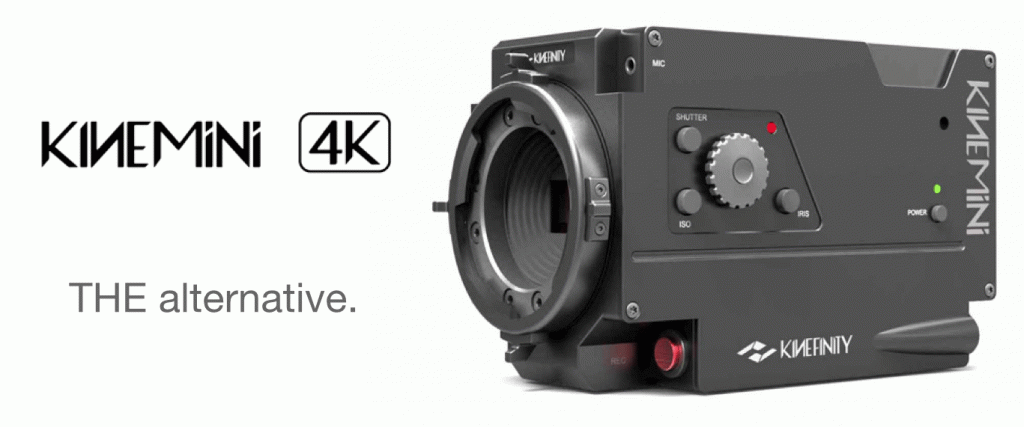In the last couple of weeks, Chinese digital cinema camera manufacturer Kinefinity have been dispatching the first KineMINI 4K cameras in small quantities to early adopters.
Some European customers have already received theirs and new footage from the KineMINI 4K camera has been hitting online video sharing platforms recently.
Polish-based production company Film Cyfrowy recently posted a few interesting video of their new KineMINI 4K testing ISO, rolling shutter, and colour correction via various LUT’s and against other popular cameras.
The KineMINI 4K is the upgraded version of the Kinefinity KineRAW Mini, which maxes out resolution at 2K in CinemaDNG (12bit) and can do offline CineformRAW (12-bit). Check out our previous post on the KINEMINI 4K and the upcoming KINEMAX 6K specs and features we did a few weeks ago.
Here’s a video below comparing the older KineRAW Mini against the GH4, Canon 1DC, and the Sony FS-700 equipped with the Odyssey 7Q external recorder.
KineRawMini/FS700/1Dc/GH4 from Film Cyfrowy on Vimeo.
Here’s the breakdown of the settings and gear used by Film Cyfrowy:
KineRAW Mini (2K, Kinelog)
Sony FS700 & ODYSSEY 7Q (4K, Slog)
Canon 1Dc (4K, C-log)
Lumix GH4 (4K, Cinema D)
Lens: Canon CN 24mm T1.5
KINEMINI 4K – MOIRE & ROLLING SHUTTER from Film Cyfrowy on Vimeo.
Moire and Rolling Shutter tested in 2K and 4K mode.
Shot with Lomo 35mm OCT19 lens @ f/11.
Moire doesn’t occur – KineMini 4K has OLPF filter.
Rolling Shutter – the best results are in High Speed Mode (in KineRaw Mini it is Sport Mode) but camera records KNG files instead of DNG. KNG can be opened only by the KineStation software.
KINEMINI ISO TEST from Film Cyfrowy on Vimeo.
Kinefinity KineMini 4K ISO test shot in 2K
CinemaDNG
KineLOG
Tokina 11-16mm f2.8
KINEMINI COLOR GRADING TEST from Film Cyfrowy on Vimeo.
KINEMINI 4K – COLOR GRADING TEST
SHOT with LOMO OCT19 35mm & 75mm lenses (mostly at f/4) with TIFFEN ND 0.9
KINELOG @ ISO 160-320
Plugins: Filmconvert, Red Bullet Mojo, ImpulZ
You can download 4K file from Vimeo
From the tests above, we can see that the KineMINI 4K’s footage is very grade-able and contains a very pleasing film-like tonality. I think, Kinefinity have improved quite a bit from their 1st generation cameras, and the colour sciences in terms of skins tones, as well as low-light sensitivity has been improved significantly.

Retailing for less than $5K USD, the KineMINI 4K is a serious competitor to BMPC and the upcoming Blackmagic Design 4K URSA for example. The Kinemini 4K has some unique features such as the Sports-mode in 2K/HD which helps improve the rolling shutter, plus higher frame rates (100fps in 2K/HD) than the frame rates on the BMPC/URSA as they stand at the moment.
We eagerly await more tests and great looking footage from the Kinefinity cameras in the near future. What do you guys think about the KINEMINI 4K? Let us know in the comments below.
Disclaimer: As an Amazon Associate partner and participant in B&H and Adorama Affiliate programmes, we earn a small comission from each purchase made through the affiliate links listed above at no additional cost to you.


There must be some sort of mistake on your iso test, your subject didn’t get any brighter as you increased the iso
Look at it again, exposure is adjusted accordingly when ISO increased. Plus I didn’t do the test.
@Edward: higher iso smaller aperture, just read the board.